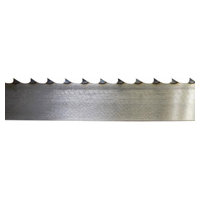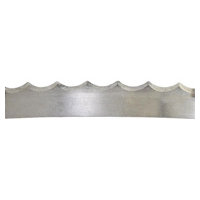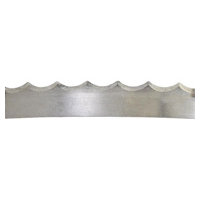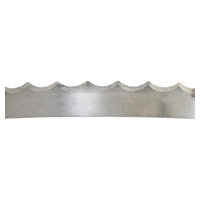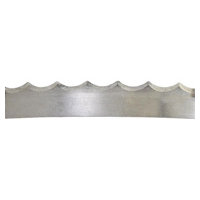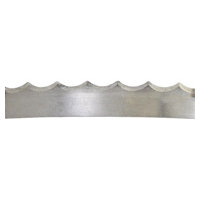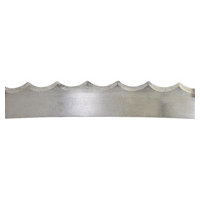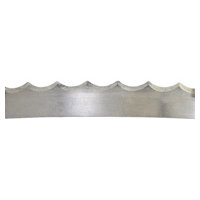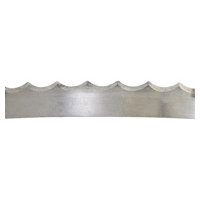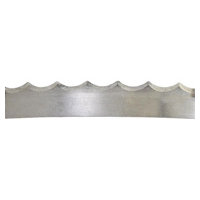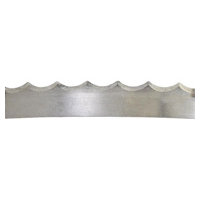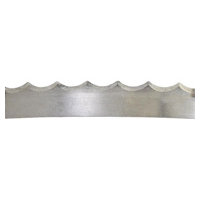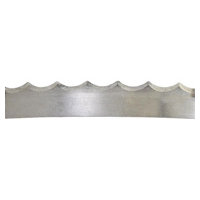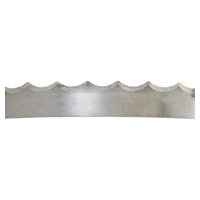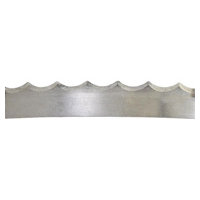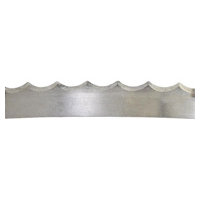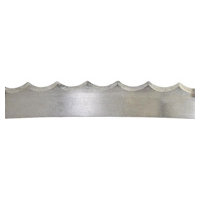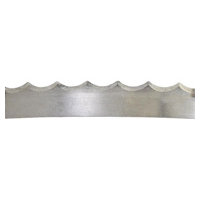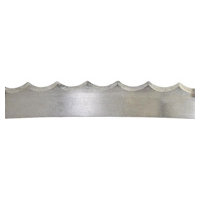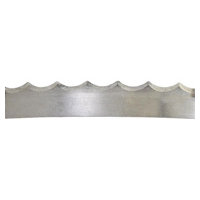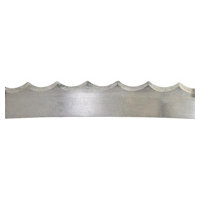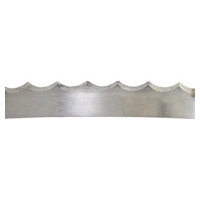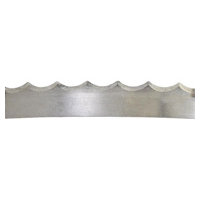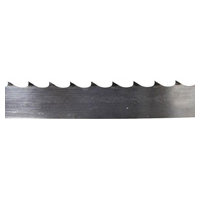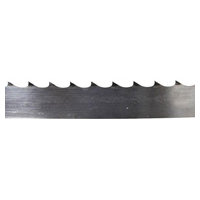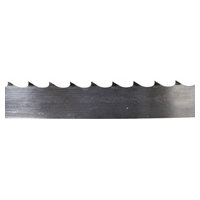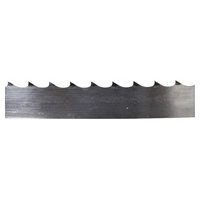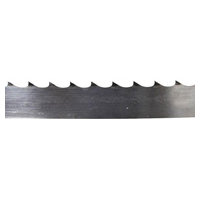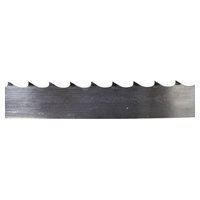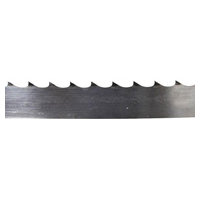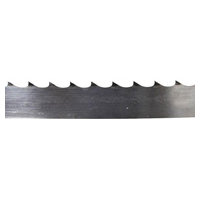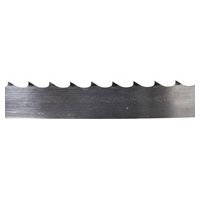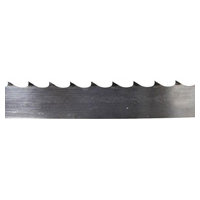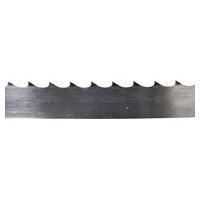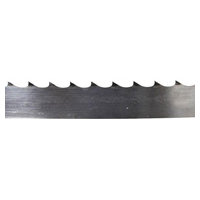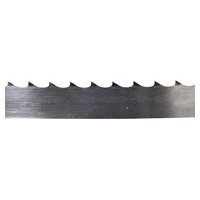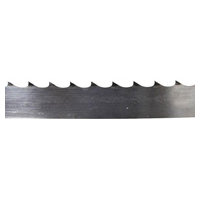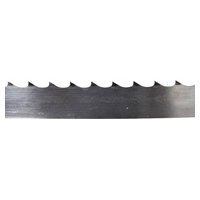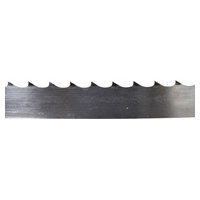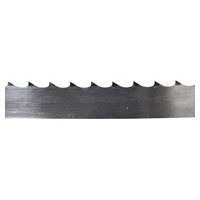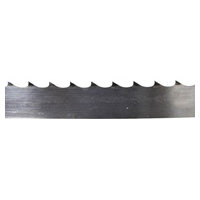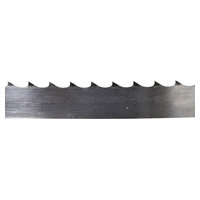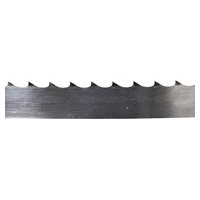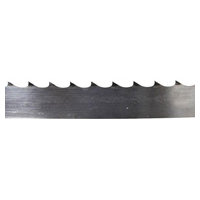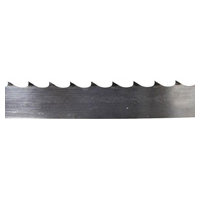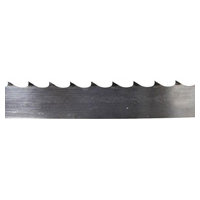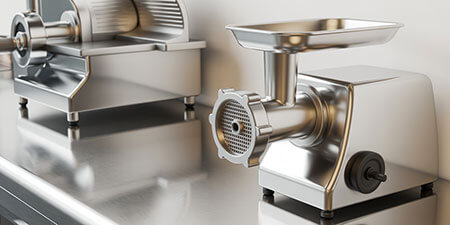Meat & Bone Saw Blades & Accessories
Scalloped & Straight Saw Blades for Boneless, Frozen & General Cuts in Various Lengths
Application
Length
Teeth Per Inch
Helpful Resources
Keep Your Meat & Bone Saw Sharp and Productive
Sharp, well‑fitted blades are essential to cleanly portioning meat, fish, and bones in any butcher shop or commercial kitchen. Our meat and bone saw blades & accessories collection delivers the replacement blades and parts you need to keep your band saw humming. We feature scalloped and straight‑edge blades from trusted manufacturers like Omcan USA, so you can count on quality steel that resists dulling and produces consistent, professional cuts. Whether you’re processing boneless steaks or tackling frozen ribs, selecting the right blade helps maintain yield, reduce waste, and protect your equipment.
Operationally, choosing the proper blade length, width, and tooth configuration makes a big difference. Blade lengths on this page range from roughly 60 inches to over 160 inches, so you can fit countertop saws and floor models alike. Applications are grouped by use, boneless items, frozen items, and general purpose, to help you match blade geometry and hardness to the product. You’ll also see options with 2, 3, or 4 teeth per inch lower TPI counts provide aggressive cutting for dense frozen blocks, while higher counts give smoother cuts on boneless meats. Some models use scalloped tooth patterns for a gentle sawing action that minimizes tearing, while straight band saw blades offer a traditional tooth profile for fast processing.
Within this assortment, you’ll find blades built from high‑carbon or stainless alloys in widths around 5/8 inch. Scalloped blades like the 222‑series are designed for boneless or delicate cuts, whereas heavier 322‑series blades offer extra rigidity and strength. Choose lengths that align with your saw’s wheel diameter and frame; filters on the page divide blades into ranges (60-77 inches, 78-100 inches, 102-118 inches, and 119-164 inches) to simplify selection. All blades ship as single pieces, but many operators keep a few spares on hand to minimize downtime during busy prep periods.
How to Choose
Start by consulting your saw’s manual to determine the correct length and width for replacement blades. Measure the current blade or refer to the manufacturer’s recommended sizing before ordering. Next, think about the products you cut most often. For boneless or tender meats, pick a scalloped blade or a blade with 3-4 teeth per inch to create a smooth edge; for frozen or bone‑in cuts, choose a heavier gauge blade with 2 teeth per inch for faster penetration and less strain on the motor. Consider whether a general‑purpose blade is sufficient or if a specialized frozen‑food blade will improve performance.
Value increases when you select the right blade for your workflow. A blade that’s too long or too narrow can break prematurely or ride off the wheels; one that’s too short can overstress bearings. Replace blades proactively when you notice slowing performance or increased waste, dull blades can overheat, strain motors, and risk accidents. Clean and dry blades after each shift and store them properly to prevent corrosion. When it comes to accessories, stock up on blade guides, wheel scrapers, and food‑grade lubricants recommended by your saw manufacturer to extend blade life and maintain sanitary conditions.
Looking to round out your meat‑processing station? Explore our selection of commercial meat & bone saws to pair with these blades, add meat grinders & choppers for complete protein prep, and equip your back‑of‑house with durable restaurant equipment to support every stage from prep to presentation.
Things to Consider
- Compatibility: Verify blade length, width, and wheel size to ensure a proper fit on your specific saw model.
- Application: Choose blades labelled for boneless, frozen, or general purpose processing to match your primary products.
- Tooth count & pattern: Lower TPI (2) and scalloped profiles suit tough or frozen cuts; higher TPI (3-4) and straight teeth offer smoother results on boneless meats.
- Blade material: High‑carbon steel blades hold an edge longer; stainless alloys resist corrosion when cutting damp or salty foods.
- Width & gauge: Wider blades around 5/8 inches provide stability for heavy cuts; narrower blades allow tighter turns for detail work.
- Maintenance: Clean and dry blades after use, use food‑grade lubricants, and check wheel alignment regularly.
- Safety: Always unplug saws before changing blades, wear cut‑resistant gloves, and follow the manufacturer’s tensioning instructions.
- Replacement schedule: Keep spare blades on hand and replace them at the first sign of dullness to reduce downtime and maintain quality.
Shop Meat & Bone Saw Blades & Accessories Today
From scalloped blades for boneless cuts to heavy‑duty bands for frozen bones, GoFoodservice offers a complete range of replacement saw blades and accessories to keep your operation running smoothly. Browse by length, tooth pattern, and application to find the perfect match for your equipment, and reach out if you need help selecting the right fit, our team is here to help you keep every cut clean and efficient.
